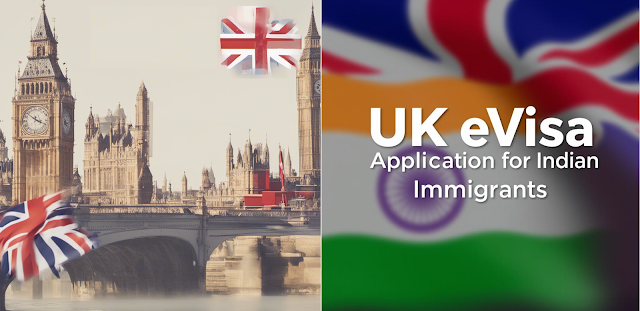UK's eVisa Initiative
What is an E-visa/ online visa?
An E-Visa allows visitors to the country to apply for their visas online. Usually, such visas are offered by different countries for tourism purposes. In most situations, e-visas are currently unavailable for student visas or work permits. Those who wish to visit a country no longer need to visit the visa office in person, wait in lines, or pass through numerous bureaucratic procedures. Instead, through a simple yet effective online system, people will all the qualifying documents can get their visas in minimal time.
E-visa eligibility criteria
- Travelers can obtain an E-visa for the purpose of tourism, visiting friends and relatives, recreational activities, medical treatment or even short-term business trip.
- The passport of an applicant must be valid for a minimum of 6 months from the date of e-visa application.
- The applicant must have return tickets to come back after staying at a destination for a predefined period of time.
- Children and infants should have their own e-visas and passports.
Documents required to apply for e-visa
The documentation may vary from country to country. Here are some common documents that you will have to submit to immigration authority at the airport on arrival.
- Passport that is valid for a minimum of 6 months from the date of application.
- Passport size photographs.
Additional documents you may have to produce on your arrival are as follows:
- A printed copy of your E-visa
- Invitation letter (if any)
- Medical insurance cover valid for the period of your stay in the destination country
How Much is the E Visa Fee?
Usually, E Visa fees vary between countries. If your country is partnered with another, they will probably waive the visa processing fees if applied online. An example is how citizens from Qatar and Mexico can get a free visa to Turkey.
Countries that Offer E-Visas/ Online Visas to Foreigners
More countries are joining the list of nations that offer an e-visa/ online visa to visitors every year. Currently, 31 countries offer e visas to visitors. It is crucial to note, however, that not all visitors may get this benefit. In some cases, e visa services may be restricted to visitors from specific countries only.
- Zimbabwe
- Zambia
- Uzbekistan
- Uganda
- United Arab Emirates
- Turkey
- Tanzania
- Sri Lanka
- St. Kitts and Nevis
- South Sudan
- Singapore
- Sao Tome and Principe
- Rwanda
- Russia
- New Zealand
- Myanmar
- Moldova
- Malaysia
- Laos
- Kuwait
- Kenya
- Iran
- India
- Georgia
- Gabon
- Egypt
- Cote d’Ivoire
- Cambodia
- Bahrain
- Azerbaijan
- Armenia
Please note, this list does not include countries that allow you to submit online visa applications but still require paperwork to be sent in physically before approval. Similarly, visa processes that require review by a consular officer are also removed from the list.
Differences Between Countries that Offer E-Visa/ Online Visas
Apart from India, many other countries also offer E-Visa systems. A comparison between a select few amongst these countries is provided below:
- Armenia: It is easier to get a visa online than on arrival in person in Armenia. Therefore, people visiting from the western world may select the e-visa option to save their time and avoid any hassle in the process.
- Egypt: Given how many people visit Egypt for its culture and historical importance, it has allowed people from over 74 countries to get their visas completely online. However, the e-visa application must be filled in at least seven days before arriving on the Egyptian border. The country charges a single entry visa fee of 25 USD, while a multiple entry visa fee is 60 USD.
- India: Indian E-visa system is still in development phases. Despite being an e-visa system. Systematic inefficiencies, bureaucratic issues, and related problems can clog down the process of getting the visa. However, on the bright side, you receive two options to pay the visa fee.
- Kuwait: Citizens of many countries can apply for an e-visa when visiting Kuwait for tourism purposes. The current fee stands at around 10 USD upon arrival. However, only a few countries are currently offering this service in Kuwait.
- Laos: Currently, citizens from over 159 countries can get an e-visa for Laos. As such, Laos has one of the strongest e-visa systems. You can get an e-visa within three working days. However, payment may reach as high as 50 USD in some cases.
- Russia: 53 different countries are on Russia’s list for offering an e-visa. The system is still new and allows a fee-less visa entry.
- Zimbabwe: Zimbabwe’s e-visa system has an easy-to-use website that allows people to fill the visa application smoothly. The current facility is available to over 100+ countries.


0 Comments